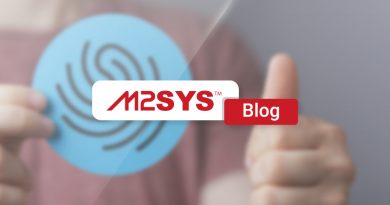Closing the Accountability Gap: How Real-Time Reporting Builds Public Trust in Law Enforcement
Real-time law reporting systems enhance accountability and efficiency for field officers by enabling instant documentation of incidents via mobile devices. This approach reduces administrative time, improves data accuracy, and fosters public trust, addressing common challenges in law enforcement workflows.
TL;DR
Real-time law reporting systems revolutionize how field officers document incidents, enhancing accountability and efficiency in law enforcement.
- Officers can log details instantly via mobile devices, reducing administrative time by up to 40% and preserving data accuracy.
- Real-time reporting boosts accountability, with some departments seeing a 25% drop in complaints due to transparent records.
- Mobile access resolves workflow fragmentation, speeding up investigations and ensuring compliance with automatic audit trails.
- Command-level decision-making improves with live data, enhancing resource management and operational efficiency by up to 30%.
- M2SYS eGov platform offers a no-code, mobile-first solution, integrating seamlessly with existing systems to enhance public trust and compliance.
Discover how M2SYS can transform your agency's operations. Contact us today to learn more about implementing real-time law reporting solutions.
Real-Time Law Reporting for Field Officers’ Accountability
Have you ever considered how a simple delay in incident reporting can result in lost evidence, legal challenges, and diminished public trust in law enforcement? In our fast-paced world, field officers are under immense pressure to document events accurately and swiftly, yet many agencies still depend on outdated methods that slow down the process.
What Is a Real-Time Law Reporting System for Law Enforcement?
A real-time law reporting system for law enforcement enables officers to record details of incidents, arrests, and other activities directly from their mobile devices. This approach eliminates the need to return to the station for manual data entry. Instead, officers capture information on the spot, which is directly fed into agency databases. For instance, during a traffic stop or crime scene response, an officer can immediately log notes, photos, and witness statements. This not only saves time but also preserves the accuracy of details, reducing the risk of forgotten facts or inconsistencies later. Agencies worldwide have observed how transitioning from paper-based logs to digital tools streamlines daily operations. According to a 2023 report from the International Association of Chiefs of Police, departments using mobile reporting have reduced administrative time by up to 40%.
Why Does Real-Time Reporting Boost Officer Accountability?
Accountability begins with clear records, and real-time reporting ensures every action is documented without gaps. Field officers often operate in high-stress situations where quick decisions are crucial, but without instant logging, those decisions can be scrutinized later due to incomplete reports. However, with mobile tools, supervisors have access to up-to-date data, allowing them to monitor activities as they occur. This visibility helps prevent misconduct and supports officers by providing a solid defense in reviews or court cases. Moreover, it builds trust with the community, as transparent records clearly show what transpired. For example, after implementing similar systems, several U.S. police departments reported a 25% drop in complaints related to officer conduct, based on data from the Bureau of Justice Statistics.
How Does Mobile Access Solve Common Pain Points in Law Enforcement?
Many agencies struggle with fragmented workflows where data is siloed, causing delays in inter-departmental sharing. High costs from manual processes accumulate, and integrating old systems often leads to deployment delays and compliance issues. Real-time law reporting systems address these challenges directly. Officers no longer deal with piles of paperwork or wait for approvals to access shared information. Instead, the system connects everyone through a central platform, speeding up investigations and reducing expenses. For example, delayed data sharing can extend case resolution by days, but instant reporting reduces that time, helping close cases faster. Additionally, it addresses compliance by creating automatic audit trails that meet legal standards, protecting agencies from lawsuits.
Strategic Advantages for Command-Level Decision Making
At the command level, real-time insights transform how leaders manage resources. Supervisors track field activities live, identifying patterns like high-incident areas and adjusting patrols accordingly. This connectivity also enhances coordination across agencies, such as when state and federal units collaborate on cross-border cases. Without it, decisions rely on outdated information, leading to inefficient responses. But with a robust system, command staff can intervene promptly, ensuring lawful conduct and better outcomes. Trends show that agencies adopting these tools see improved response times, with some reporting a 30% increase in operational efficiency, according to a study by the National Institute of Justice.
Adopting Secure Systems for Compliance and Public Trust
Government agencies and contractors now prioritize mobile-first reporting to meet rising demands for transparency. Legacy processes expose them to risks like inaccurate reports and eroding confidence, especially amid global calls for police reform. By choosing a system that integrates with national databases, agencies strengthen evidence and shorten investigation timelines. This move protects rights and supports efficient management. For police departments, investigative units, correctional administrations, government ministries, and public safety agencies, the right platform makes all the difference.
How M2SYS eGov Platform Delivers Real-Time Law Reporting Solutions
With over 20 years of experience working with governments and law enforcement agencies globally and in the United States, M2SYS builds and delivers eLaw Enforcement solutions through its eGov platform. This platform addresses key challenges like fragmented workflows and data delays by providing a Law Enforcement Management Solution. Field officers use mobile devices for instant documentation, which minimizes errors and accelerates case processing. For instance, in a project with the Salt Lake County Sheriff’s Office in Utah, M2SYS integrated inmate management to ensure consistent data from intake to release, improving accountability and reducing errors. Similarly, in U.S. correctional facilities, the platform enhanced identity control for inmates and visitors, supporting real-time sharing and transparent records. Even in international efforts, like modernizing border controls in Iraq, M2SYS enabled secure verification that bolstered compliance and trust. The eGov platform operates on a no-code setup for quick deployment, fully localized to fit local needs, and connects seamlessly with existing systems. As a result, agencies gain operational visibility, better resource allocation, and stronger evidentiary integrity, all while maintaining focus on their core mission.
Frequently Asked Questions
What is the primary benefit of using a Real-Time Law Reporting System?
The key benefit is enhanced accountability and transparency in law enforcement. Real-time reporting allows officers to document incidents instantly, which reduces the chances of errors and improves the overall accuracy of records. This not only streamlines operations but also aids in building public trust by providing clear records of activities. For more insights, check out M2SYS eLaw Enforcement solutions.
How does real-time reporting impact the efficiency of law enforcement agencies?
Real-time reporting significantly boosts efficiency by reducing administrative time and paperwork. Officers can spend more time in the field rather than on documentation, thanks to mobile access and streamlined data processes. This change has led to a reported 40% reduction in administrative tasks. Learn more about increasing efficiency here.
How do real-time systems ensure compliance and security?
Real-time law reporting systems create automatic audit trails which help law enforcement agencies maintain compliance with legal standards. By integrating with national databases, they ensure secure data handling and storage, preventing unauthorized access and enhancing security measures. For more on compliance, see our detailed product overview at M2SYS eLaw Enforcement Solution.
What challenges do these systems solve for law enforcement?
They address several pain points including the limitations of legacy systems by providing timely and accurate reporting, reducing judicial risks through strong evidentiary integrity, and boosting public confidence through transparency. For more examples of challenges solved, explore our blog on public information access.










